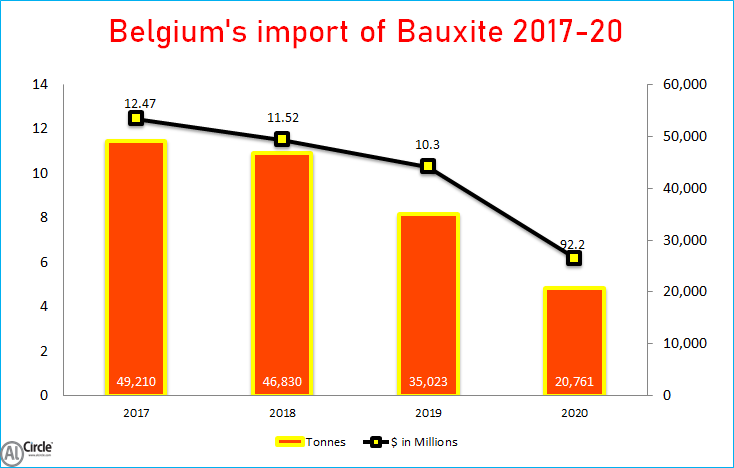

The industrial revolution on the European continent began in Belgium. Thus everything was in place for boosting the coal and steel industries in both areas. Other reasons for its industrialization came from its geography. Its proximity to Britain and its strong trading relationship with her allowed new technologies to subsequently arrive in Belgium.

Belgium’s bauxite import market reflected an abrupt downfall majorly during 2017-19, as the total import volume only stood at 131,063 tonnes and the revenue expenditure was recorded at $34.29 million. The bauxite import for 2020 has been analysed has with a rapid downfall, as the volume would remain only to 20,761 tonnes, with Y-o-Y reduced volume of 14,262 tonnes and the expenditure also dropped to $6.19 million. However, when the predicted import volume and expenditure of 2020 is added up with the previous three years it show-casts 151,824 tonnes and $40.48 million respectively.
In 2017 the bauxite import of Belgium was recorded at 49,210 tonnes and the expenditure remained at $12.47 million, whereas in 2018 the import saw a dip by 4.83%, as the import volume stood at 46,830 tonnes and the expenditure remained at $11.52 million.
Belgium’s bauxite import in 2019 as reflected a negative trend, as the import volume stood at 35,023 tonnes, a de-growth by 25.21% and the expenditure also dropped down to $10.30 million and again 2020 projected import also pointed a drastic fall by 40.72% as the volume might reach only up to 20,761 tonnes and the expenditure might be dragged down to $6.19 million.
The bauxite exporting nations for Belgium’s import are Brazil, China, Netherlands, Germany, India, etc.
Responses








